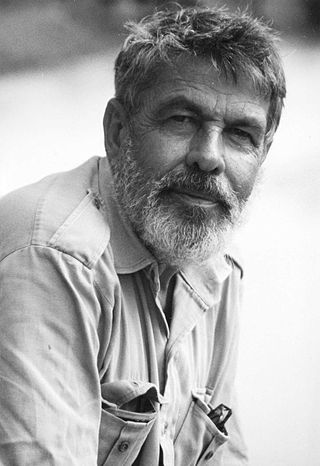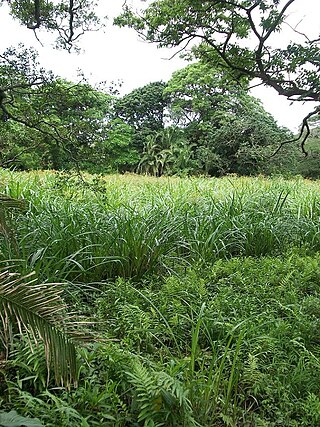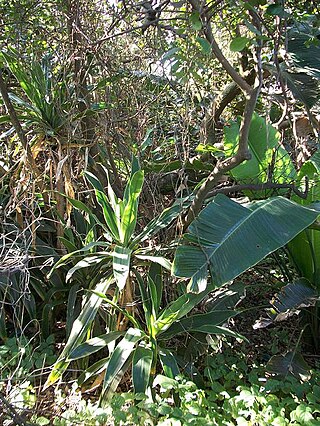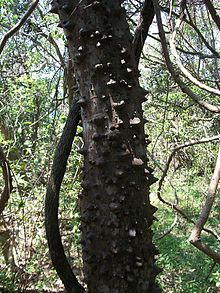Ezemvelo KZN Wildlife is a governmental organisation responsible for maintaining wildlife conservation areas and biodiversity in KwaZulu-Natal Province, South Africa. Their headquarters is in Queen Elizabeth Park situated on the northern slopes of Pietermaritzburg, the KwaZulu-Natal provincial capital. Prior to 1994, it was known as the Natal Parks Board.

eMdloti, alternatively rendered Umdloti and also known as Umdloti Beach, is a small resort village situated along the KwaZulu-Natal North Coast, South Africa. It lies at the mouth of the Mdloti River approximately 24 km north-east of Durban and 11 km north-east of uMhlanga and now forms part of eThekwini, the Greater Durban Metropolitan Municipality.

The Berea is a ridge above the city of Durban, KwaZulu-Natal, South Africa on the northern side which overlooks the city centre and the Indian Ocean. Berea is also used as a collective designation for the suburbs in the area. It has been described as the area between the Howard College Campus of the University of KwaZulu-Natal, and the Burman Bush Nature Reserve.

Tony Charles (Mashesha) Pooley (1938–2004) was a South African naturalist, award-winning conservationist and one of the world's foremost authorities on the Nile crocodile.

The Ohlanga River is a river in KwaZulu-Natal, South Africa, which empties into the Indian Ocean just north of uMhlanga, north of Durban. The river has extensive reed beds in the estuary at its mouth, which is only 7 km southwest from the mouth of the Mdloti River. Presently, this river is part of the Mvoti to Umzimkulu Water Management Area.

uMhlanga, alternatively rendered Umhlanga, is a residential, commercial and resort town north of Durban on the coast of KwaZulu-Natal, South Africa. It is part of the eThekwini Metropolitan Municipality, which was created in 2000 and includes the greater Durban area. The name means "place of reeds" in the Zulu language, and the correct pronunciation of "hl" in uMhlanga is similar to the Welsh "ll".

The Umtamvuna Nature Reserve is situated in South Africa on the KwaZulu-Natal side of the Mtamvuna River, and is managed by Ezemvelo KZN Wildlife. The reserve is 3,257 hectares in extent and was established on 25 July 1971.
Elsa Pooley, is a South African botanist, landscaper, tour guide, and artist.

Ilanda Wilds is a nature reserve along Amanzimtoti River in the town of Amanzimtoti, KwaZulu-Natal, South Africa. This small area of land contains various habitat types, ranging from steep rocky slopes to various riverine habitats, forest and small patches of grassland.

Areas of forest which grow in KwaZulu-Natal, South Africa mostly on south facing slopes in higher rainfall areas, and along the humid coastal areas. Different types of forest can be identified by their species composition which depends mostly on the altitude, latitude and substrate in which they grow. South facing slopes are favourable for the development of forest as they are more shaded, and therefore cooler and retain more moisture than the northern slopes. The extra moisture on the south slopes is not only favoured by forest trees, but also helps to prevent or subdue wildfires. Fires can also be blocked by cliff faces and rocks or boulders on these slopes, and by streams or rivers at the base of the slopes. The coastal regions are conducive to forest formation, because of high rainfall and humidity which are favoured by forest trees and also help to prevent or subdue fires. The rivers of the coastal areas are also broader than further inland, which may often prevent fires from spreading long distances, and fires generally burn uphill and therefore more often away from areas at low altitude.

oNgoye Forest, also known as Ngoye or Ngoya Forest, is an ancient coastal scarp forest, protected by the oNgoye Forest Reserve in South Africa's KwaZulu-Natal province. The forest of almost 4,000 ha covers an extensive granite ridge that rises from 200 to 460 metres above sea level. It is found some 10 km inland, or 16 km by road, from the coastal town of Mtunzini, and adjoins smaller forest reserves on its periphery, namely Impeshulu in the west, Ezigwayini in the north, and Dengweni in the south.

The Karkloof Forest is situated in the Karkloof Nature Reserve, 22 km north of Howick, KwaZulu-Natal, South Africa.

The Maputaland-Pondoland-Albany Hotspot (MPA) is a biodiversity hotspot, a biogeographic region with significant levels of biodiversity, in Southern Africa. It is situated near the south-eastern coast of Africa, occupying an area between the Great Escarpment and the Indian Ocean. The area is named after Maputaland, Pondoland and Albany. It stretches from the Albany Centre of Plant Endemism in the Eastern Cape Province of South Africa, through the Pondoland Centre of Plant Endemism and KwaZulu-Natal Province, the eastern side of Eswatini and into southern Mozambique and Mpumalanga. The Maputaland Centre of Plant Endemism is contained in northern KwaZulu-Natal and southern Mozambique.

Isoglossa woodii, commonly known as buckweed, is a monocarpic shrub of the family Acanthaceae, growing up to 4 m tall. It grows in colonies in coastal forest areas of KwaZulu-Natal and marginally into Eastern Cape, South Africa.

KwaZulu-Natal coastal lowland forest is a subtropical forest type that was once found almost continuously along the low-lying coastal areas of KwaZulu-Natal, South Africa. It still exists in protected areas, but much has been cleared for sugar-cane plantations and housing developments.

KwaZulu-Natal Dune Forest is a subtropical forest type that was once found almost continuously along the coastal dunes of KwaZulu-Natal, South Africa. This vegetation type develops in sheltered areas behind the littoral zone, where with some protection from the salt wind it may develop with canopies as tall as 30 m. It still exists in protected areas, but much has been degraded by human activity. Coastal dune forest covers approximately 1% of the land area of KwaZulu-Natal, and is a habitat type seriously threatened from human population pressure and development, particularly titanium mining.

Deinbollia oblongifolia is a shrub or small tree in the family Sapindaceae. It is commonly known as the dune soap-berry and is found in coastal vegetation from the Eastern Cape of South Africa, through KwaZulu-Natal to southern Mozambique and Eswatini. It is named after Peter Vogelius Deinboll (1783–1876), a Danish botanist and plant collector.

Empisini Nature Reserve was established in 1973 and is situated in Umkomaas, KwaZulu-Natal, South Africa. The reserve is approximately 60 ha in extent and is owned by the borough of uMkhomanzi which has been incorporated into the eThekwini municipality. Empisini is managed jointly by eThekwini and the Umkomaas centre of the Wildlife and Environment Society of South Africa. Empisini takes its name from a perennial stream which flows through it, and means "Place of the Hyena" in isiZulu. The reserve consists of coastal forest, wetlands, grassy slopes and a dam. Infrastructure consists of hiking trails, demarcated picnic sites, overnight cabins, and a tree house.
North Park Nature Reserve is a protected area along the banks of the Umhlatuzana River, near Queensburgh in KwaZulu-Natal, South Africa. The park was proclaimed in 1968 and is managed by Ezemvelo KZN Wildlife.


















